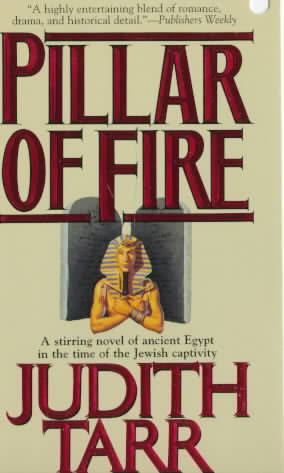7.6 /10 1 Votes7.6
Language English Publication date 1995 ISBN 0-312-85542-7 Genre Historical drama | 3.8/5 Goodreads Publisher Forge Pages 448 Originally published 1995 Page count 448 OCLC 32088557 | |||||||||||||||||||||||||||||||||
 | ||||||||||||||||||||||||||||||||||
Subject Egypt--History--Eighteenth dynasty Similar Judith Tarr books, Other books | ||||||||||||||||||||||||||||||||||
Pillar of Fire is a 1995 historical fantasy novel by Judith Tarr. It deals with the reigns of Egyptian pharaohs Akhenaten and Tutankhamun and the Exodus from the perspective of a Hittite slave girl of Ankhesenpaaten. It draws heavily on Ahmed Osman's theory that Moses and Ankhenaten were the same person.
Contents
The idea of Akhenaten as the pioneer of a monotheistic religion that later became Judaism has been considered by various scholars starting with Sigmund Freud's views in Moses and Monotheism. Tarr comments in the endnotes that she was surprised at how little she had to tweak historical fact to write the story.
The audiobook version, published in 1998, ran for approximately 22 hours and was read by Anna Fields.
Synopsis
Set in ancient Egypt the narrative is based on the notion that Moses and the Pharaoh Akhenaten were one and the same. Narrated in the third person from the viewpoint of a Hittite slave girl, the novel juxtaposes the Exodus story with the events in the Egyptian court.
Awards
The novel was a NESFA 1995 Hugo Recommendation.
Reviews
With her usual skill, Tarr (Throne of Isis) combines fact and fiction to create yet another remarkably solid historical novel set in ancient Egypt. This narrative is based on an intriguing premise: What if Moses, patriarch of monotheism, and the Pharaoh Akhenaten, who forbade the Egyptians from worshiping any god save the sun god Aten, were one and the same?....The juxtaposition of the Exodus story with the events in the Egyptian court makes for an engrossing saga, and Nofret's shrewd skepticism in the face of such great events lends the tale intimacy. This is a highly entertaining blend of romance, drama and historical detail.
Tarr's novel represents the most dramatic connection between the Amarna phase of Egyptian history and Hebrew monotheism.
